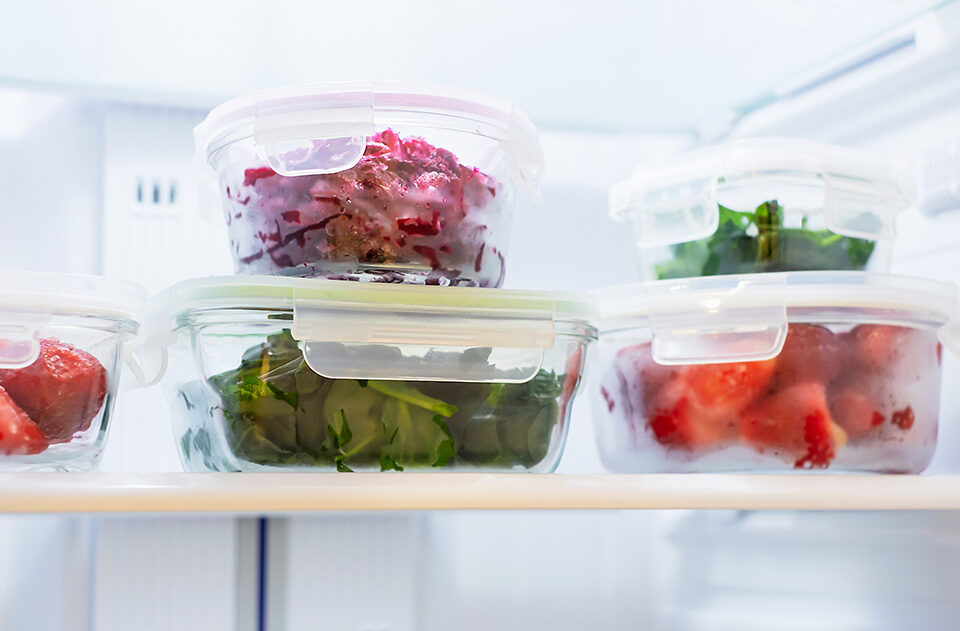What is the Glycocalyx and Why it Matters for Your Vascular Health

The glycocalyx is a thin, gel-like layer that lines the inside of your blood vessels. Though it’s microscopic, it plays a big role in keeping your cardiovascular system healthy. This layer is made up of sugars and proteins and acts like a protective shield between your blood and the vessel walls.
The endothelial glycocalyx (EGX) has several important jobs. It helps control what enters and leaves the blood vessels, protects against inflammation, prevents harmful cells and particles from sticking to the vessel walls, and even helps regulate blood pressure by sensing blood flow and triggering nitric oxide release. When the glycocalyx is healthy, it keeps the blood vessels smooth, flexible, and resistant to damage.
So why haven’t most people heard of it? The main reason is that the glycocalyx is very hard to see with standard medical tools. It’s also fragile and wasn’t well understood until more recent research highlighted its importance. But growing evidence shows that damage to the glycocalyx is linked to serious health issues like diabetes, heart disease, hypertension and even complications from COVID-19. That’s why public awareness of the glycocalyx is vital—knowing about it could help people take earlier steps to protect their vascular health.
Glycocalyx Function in the Human Body
The glycocalyx serves several essential roles in vascular health. Each function contributes to the body’s ability to regulate circulation, protect vessel walls, and prevent disease.
Vascular Barrier Protection
The glycocalyx plays several roles in maintaining vascular health, working as both a protective barrier and a signaling interface. One of its most important functions is vascular barrier protection. This thin layer helps prevent the leakage of fluids and proteins from the bloodstream into surrounding tissues, which is crucial for maintaining proper fluid balance and blood pressure. At the same time, it acts as a shield for the endothelial cells lining the blood vessels, protecting them from physical stress, oxidative damage, and inflammatory substances in the blood. By preserving the integrity of the vessel walls, the glycocalyx helps reduce the risk of inflammation, clot formation, and vascular and heart disease.
Blood Flow and Shear Stress Sensing
Another key role of the glycocalyx is its ability to sense shear stress—the friction created by blood flowing over the surface of blood vessels. This mechanical signal is picked up by the glycocalyx and passed on to the endothelial cells beneath it. In response, the cells increase production of nitric oxide (NO), a powerful molecule that helps blood vessels relax and widen. This process is essential for maintaining healthy blood pressure and supporting smooth, efficient circulation throughout the body. Without proper shear stress sensing, blood vessels can become stiff and narrow, increasing the risk of high blood pressure and cardiovascular disease. The glycocalyx, therefore, plays a critical role in helping the body adapt to changes in blood flow and keep circulation running smoothly.
Anti-inflammatory and Anticoagulant Properties
The glycocalyx also helps protect blood vessels by reducing inflammation and clot formation. It does this by preventing white blood cells and platelets from sticking to the vessel walls—an early step in both inflammation and atherosclerosis. When these cells can’t stick, the risk of damaging the vessel lining is much lower. In addition, parts of the glycocalyx, like heparan sulfate, have natural anticoagulant properties that help keep blood flowing freely and prevent unnecessary clotting. Together, these functions help maintain a calm, balanced environment inside the blood vessels, lowering the risk of chronic inflammation, blood clots, and related diseases.
Factors That Damage the Glycocalyx
The glycocalyx is delicate and can be damaged by a number of common health challenges.(1) High blood sugar, especially in people with diabetes, can cause the glycocalyx to break down, leading to leaky blood vessels and increased inflammation. Smoking and oxidative stress—caused by free radicals from pollution, poor diet, or toxins—also harm this protective layer. Long-term inflammation, often linked to chronic disease or unhealthy lifestyle habits, weakens the glycocalyx over time. Serious illnesses like sepsis and infections can trigger rapid and severe glycocalyx breakdown, contributing to dangerous drops in blood pressure and organ damage. Even everyday factors like a poor diet and lack of physical activity can gradually wear down the glycocalyx, making it harder for your blood vessels to stay healthy and function properly.
Signs and Consequences of Glycocalyx Damage
When the glycocalyx is damaged, one of the first signs is increased vascular permeability—meaning the blood vessel walls become too “leaky.” Normally, the glycocalyx acts like a fine filter that keeps proteins and fluids where they belong: inside the blood vessels. But when it breaks down, fluids can escape into surrounding tissues. This leads to tissue swelling, also known as edema, and if widespread, can affect organ function.
As the damage continues, organs that rely on precise fluid balance—like the lungs, kidneys, and brain—start to suffer. In the kidneys, for example, a weakened glycocalyx can allow proteins to leak into the urine (a condition called proteinuria), which is an early sign of kidney disease. In the brain, damage to the tiny vessels that supply oxygen and nutrients can contribute to cognitive decline and increase the risk of stroke or small vessel disease.
Over time, a compromised glycocalyx contributes to the progression of cardiovascular disease. The loss of its protective and anti-inflammatory functions makes the vessel walls more vulnerable to plaque buildup, blood clots, and high blood pressure. In fact, glycocalyx dysfunction has been linked to early atherosclerosis, heart attacks, and impaired recovery from vascular injury. Because these changes often happen silently, the damage may go unnoticed until serious complications arise.
How to Repair and Support a Healthy Glycocalyx
Although the glycocalyx is fragile, it is not beyond repair. You can actively support its restoration and protection by combining a healthy lifestyle with the right nutrients—and in some cases, specific medical therapies. Research is still evolving, but several strategies already show strong promise for keeping the glycocalyx intact and functioning well.
Nutrients and Natural Compounds
Certain nutrients are especially helpful in supporting the structure and function of the glycocalyx (2). Sulfur-rich foods, such as garlic, onions, and cruciferous vegetables (like broccoli and Brussels sprouts), help provide building blocks for glycocalyx repair. These foods contain compounds that support the production of key molecules within the glycocalyx structure.
Polyphenols, powerful plant compounds found in foods like berries, red wine, green tea, and dark chocolate, are also beneficial. In particular, resveratrol (found in grapes and red wine) and quercetin (found in apples, onions, and leafy greens) have been shown to protect the glycocalyx from oxidative damage and inflammation.
Revasca, a targeted supplement designed to support and protect the glycocalyx, combines these key compounds to enhance vascular health and resilience. It provides concentrated nutrients shown to protect against oxidative stress and promote glycocalyx repair, making it an excellent addition to a supportive lifestyle plan. Order here and receive a discount.
Omega-3 fatty acids, found in fatty fish like salmon, flaxseeds, and walnuts, have anti-inflammatory effects and support the overall health of blood vessel linings, including the glycocalyx. They may also help reduce the enzymes that break down the glycocalyx in times of stress or disease.
Vitamins D and C also play key roles. Vitamin C supports collagen and tissue repair while acting as a potent antioxidant, helping to prevent oxidative stress-related breakdown of the glycocalyx. Vitamin D helps modulate immune responses and may reduce the chronic inflammation that contributes to glycocalyx damage over time.
Together, these nutrients create a protective environment for the glycocalyx, helping to restore its structure and support the healthy function of your blood vessels.
Lifestyle Habits
Beyond diet, your daily habits play a powerful role in protecting and repairing the glycocalyx. One of the most important factors is balanced blood sugar control. High blood sugar, especially when frequent or prolonged, can directly damage the glycocalyx and increase vascular permeability. Keeping glucose levels steady—through a combination of healthy eating, regular activity, and stress management—helps prevent this kind of harm and supports overall vascular stability.
Regular aerobic exercise is another key habit. When you engage in physical activity, the increased blood flow creates gentle shear stress along your vessel walls. This kind of stress is actually beneficial—it stimulates the production of nitric oxide and helps reinforce the structure of the glycocalyx. Activities like brisk walking, cycling, or swimming several times per week can make a measurable difference in endothelial health.
Finally, adequate sleep and hydration are often overlooked but equally essential. Poor sleep can raise inflammation and stress hormones, both of which contribute to glycocalyx breakdown. Staying well-hydrated, on the other hand, helps maintain proper blood flow and supports the protective gel-like quality of the glycocalyx layer. Together, these simple habits help create a body environment where the glycocalyx can thrive and do its job effectively.
Emerging Therapeutic Approaches
While lifestyle and nutrition form the foundation of glycocalyx support, researchers are also exploring targeted therapies that may help repair or protect this vital structure—especially in people with existing vascular damage or chronic illness.
In addition, there’s growing interest in glycocalyx-enhancing supplements, which often combine ingredients like hyaluronic acid, glucosamine sulfate, polyphenols, and antioxidants. While many of these formulations are still under review, early studies and clinical use suggest they may support glycocalyx regeneration and protect against further breakdown—especially when paired with a healthy lifestyle.
As our understanding of the glycocalyx deepens, we can expect to see more pharmacological and supplement-based therapies aimed at restoring this critical barrier. These approaches offer exciting potential for those at high risk of vascular disease, or for anyone looking to proactively support their cardiovascular health at the microscopic level.
Final Thoughts on Glycocalyx Awareness
The glycocalyx is small and invisible, but it plays a big role in keeping our blood vessels healthy. Even though it helps protect against inflammation, blood clots, and damage to the vessel walls, most people have never heard of it. That’s why it’s so important to start talking more about the glycocalyx in public health and everyday health conversations.
We also need more research and education. As scientists learn more about how the glycocalyx works—and how to protect or repair it—we’ll have better ways to prevent and treat serious health problems like heart disease, diabetes, kidney issues, and even brain decline.
The good news is, you don’t have to wait. There are simple steps you can take right now to support your glycocalyx and your overall vascular health: eat well, move your body, keep your blood sugar steady, stay hydrated, and get enough sleep. These small daily habits help protect this important layer and may lower your risk for long-term disease. The more we understand and care for the glycocalyx, the better we can take care of our hearts, vessels, and overall health.





